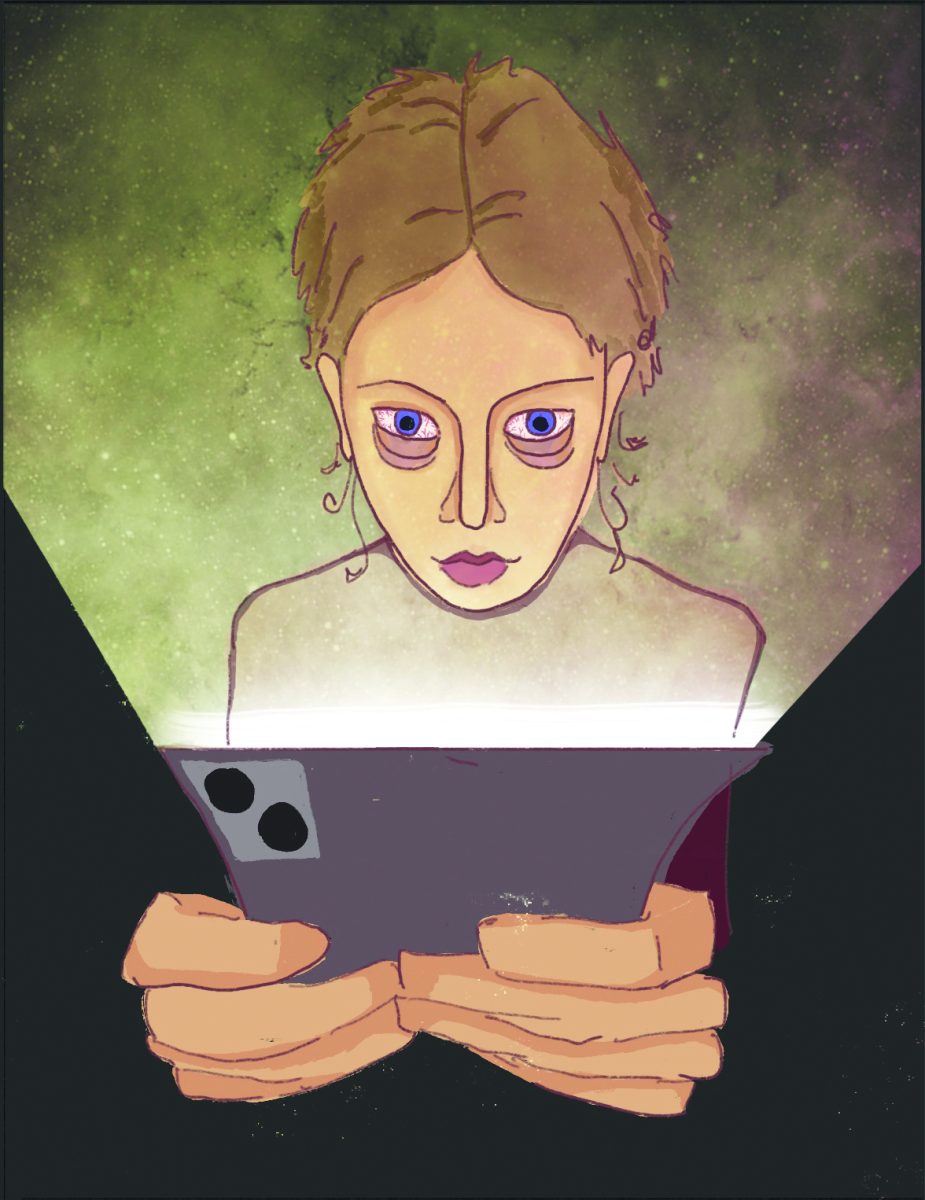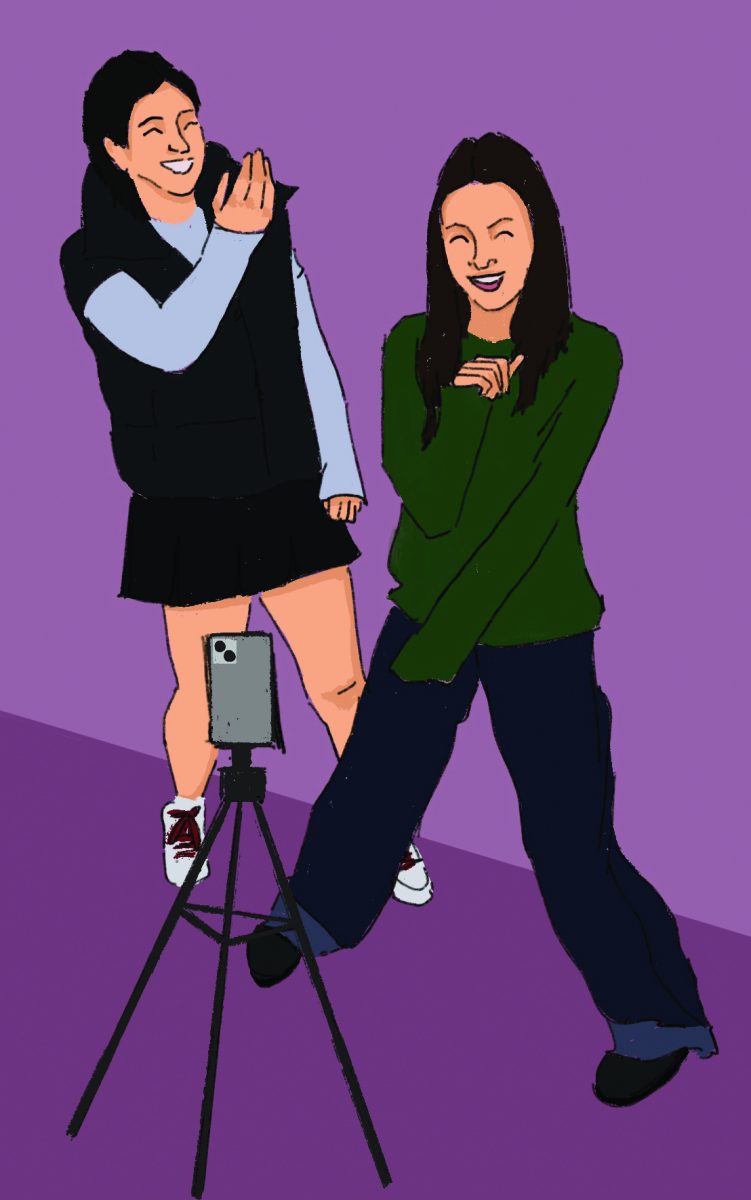Lily ’22
No one could accuse Marlborough of not being COVID-cautious. For nearly a year and a half, we forwent all in-person schooling in favor of the infamous “Zoom-school” with students relegated to their bedrooms and a world of impersonal pixelated squares. In an endless stream of monotony, we rolled out of bed to stare at bright screens for hours on end, diligently finished our homework and rolled right back into the same bed to start the cycle once more. Students dutifully fulfilled their espoused civic responsibility, forgoing normal hallmarks of teenage life and development (parties, graduation, prom, etc) to keep friends and relatives safe and healthy across the country. While we were fortunate to be at Marlborough and have access to a wide range of support services from counselors to technology services, and a dedicated, rigorous approach to online schooling, the toll on students is undeniable. Adolescence is a stage filled with tremendous social and intellectual development, so missing out on human interaction and camaraderie with other students was devastating. Young adults suffered particularly acute mental health issues and tremendous feelings of isolation and loneliness.

After our foray into digital learning concluded came two months of hyper-cautious “hybrid learning” with students splitting time between their homes and campus. While it was refreshing to be back on campus in any capacity, the drudgery of online learning endured. Many classes remained completely online purely for logistical reasons, so in-person students simply ended up joining a zoom call from an empty classroom. When we came back to campus for the 2021-2022 school year, it felt like things were on the mend. Although we were still masked, Marlborough felt like Marlborough again, and masks seemed like a temporary requirement. Come February of 2022, the CDC removed its guidelines for indoor masking in schools and on March 11, we received an email marking the official end of indoor and outdoor masking requirements at Marlborough.
After months of the dreaded mask-ne and frantic attempts to gauge whether your friend was shooting you a murderous glare or a lighthearted smirk, clear skin and normal human body language seemed on the horizon. For nearly two years, students at Marlborough abided by the most conservative of CDC guidelines, enduring online school, readily receiving the vaccine and booster shot and submitting to once or twice weekly testing. Los Angeles County is now rated in the lowest, “green” tier of COVID severity according to the CDC website meaning we have had fewer than 200 new COVID cases per 100,000 people.
For some, however, the COVID situation still feels frightening or perhaps, with immuno-compromised family members or friends, students or faculty members wish to take precautions. Those individuals may continue to mask, often wearing N-95 masks which are effective in personal protection from COVID-19. However, at a certain level, COVID no longer becomes a question of public and institutional safety measures, but rather an individual one. People can easily maintain personal protective measures, but to ask the wider community to continue with masking at a time when the COVID threat is at an all-time low is nonsensical and unfair to students who have endured genuinely challenging circumstances in the name of public safety for nearly two years.
Should additional variants of COVID 19 re-emerge or the threat to our community’s health radically increase, we have proven our adaptability time and time again. When the Omicron variant emerged over winter break, we switched to universal N-95s and testing was ramped up in response. In the near future, COVID will not be universally eliminated, so as a community we have to balance student development and wellbeing with public safety while we enjoy record low numbers of COVID. And frankly, while the qualified individuals at the CDC advise against masking, we ought to, well, “trust the experts.”
Shaye ’25
Let me be the first to say it: I hate COVID. For almost a year and a half, we sacrificed our oh-so-carefully cultivated social calendars to embrace a year of isolation: swapping out pleated skirts for pajama pants, classrooms for bedrooms and parties for yet another night of Netflix in bed. But just as the daily tedium of COVID-life began to grow unbearable, renewed hope lifted the deadened hearts of Marlborough students: an email from the desk of Head of School Priscilla Sands announced that the 2021-22 school year would be held in person. The return to in-person schooling marked a milestone in the slow, but certain revival of a pre-COVID status quo; for the first time since the virus’s initial emergence, our average daily screen time report didn’t exceed 15 hours, and we could see our friends’ faces (albeit only the top half). Weekly COVID tests aside, there was only one thing barring our complete return to an ordinary lifestyle: masks.

Masks have been an enduring staple in one’s COVID closet. Throughout 2020 (and 2021), it was both a rare and shocking sight to see someone exiting their house without the obligatory hygienic triad (sanitizer, hand wipes and a mask). So when Marlborough at last decided to go fully mask optional, it was, to say the least, a tough transition. Although many community members relished their newfound facial freedom, others chose to keep their masks on from habit, if not safety concerns. And while I long for the day where we put COVID in the past, I nevertheless have to wonder: is going mask-optional really the answer?
The reason behind the resurging cry for mask-optional policies is simple: people are done with being told to cover up their faces. But while mask-wearing is quickly growing tiresome, it seems like both a rash and irresponsible decision to determine policies based on feelings over facts. We should look to science, not our own exasperation, to determine whether optional masking is the best course of action. The only way to truly move beyond the coronavirus is for authorities to create and enforce policies designed to minimize the spread and danger of the disease.
Those who defend the mask-optional practices argue that the dwindling number of COVID cases is proof that it’s safe for us to remove our masks once and for all. And yes, these facts are technically true. Since January, COVID cases in Los Angeles have significantly declined, with numbers hovering consistently around 1000 infected people for any given day (for just LA county). And yes, it’s also true that COVID infections have decreased in severity; new vaccines have lowered the once alarming death rates of COVID. But I think that it’s important to remember that we’ve seen this trend before. Throughout October to early December 2021, Los Angeles COVID rates lingered around the same numbers we see now. These low transmission rates lured us into a false sense of security before the Omicron variant was unleashed, wreaking havoc and exponentially increasing COVID cases. Who’s to say this won’t happen again? If anything, our lax behavior surrounding masking policies makes a COVID resurgence in the form of a new variant ever the more likely.
Removal of mask mandates seems rushed, unsafe and premature. The decision seems to address the general frustration towards masks more than our actual safety. The only way to ensure the eventual end of the virus is to maintain strict precautions and guidelines that maximize COVID containment. Mandatory masking is one such policy, and while it would be undeniably frustrating, I think it’s perfectly reasonable to ask you to value your health over the momentary relief of a small discomfort. Pride and dramatics aside, the best course of action is abundantly clear: just wear your mask.










